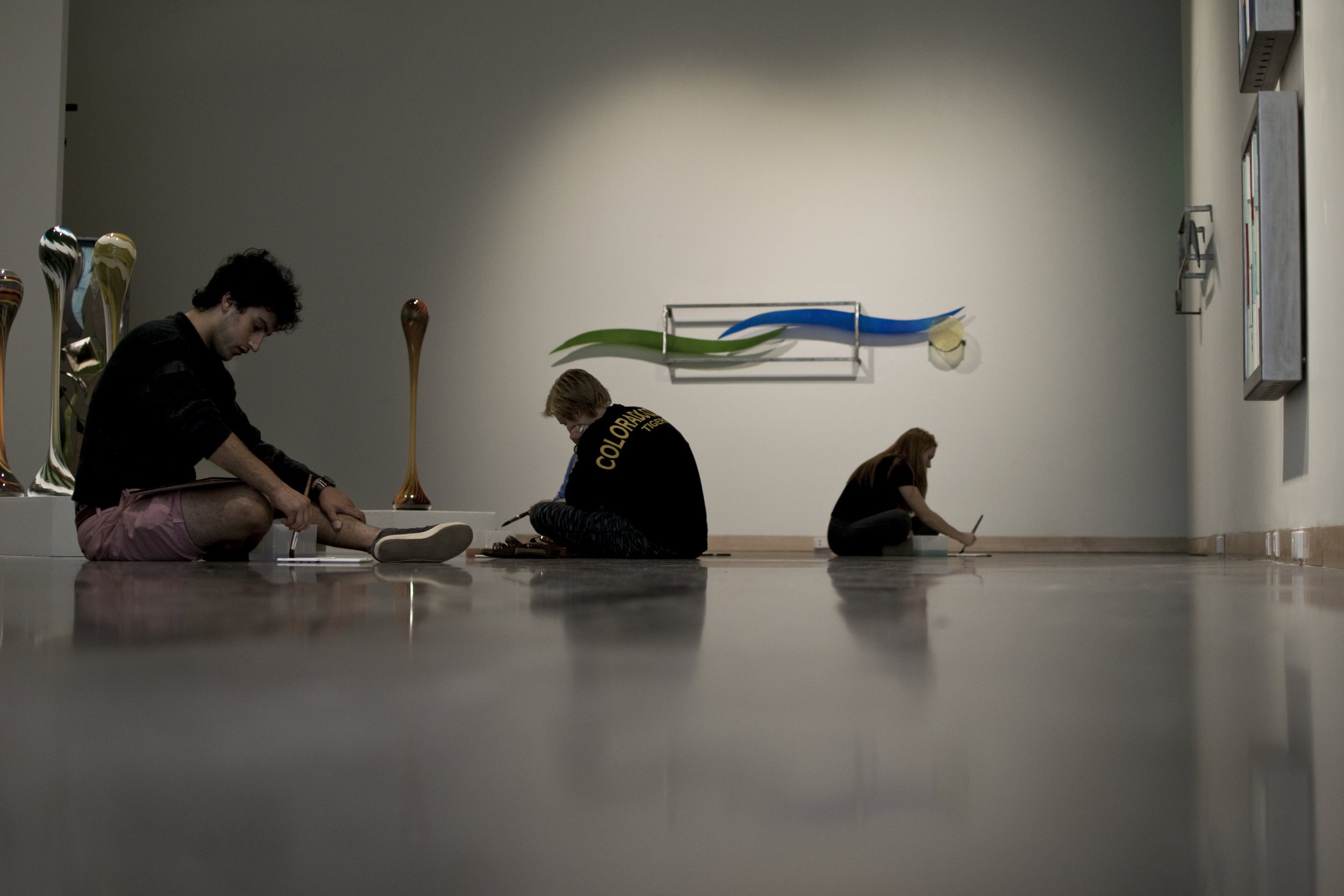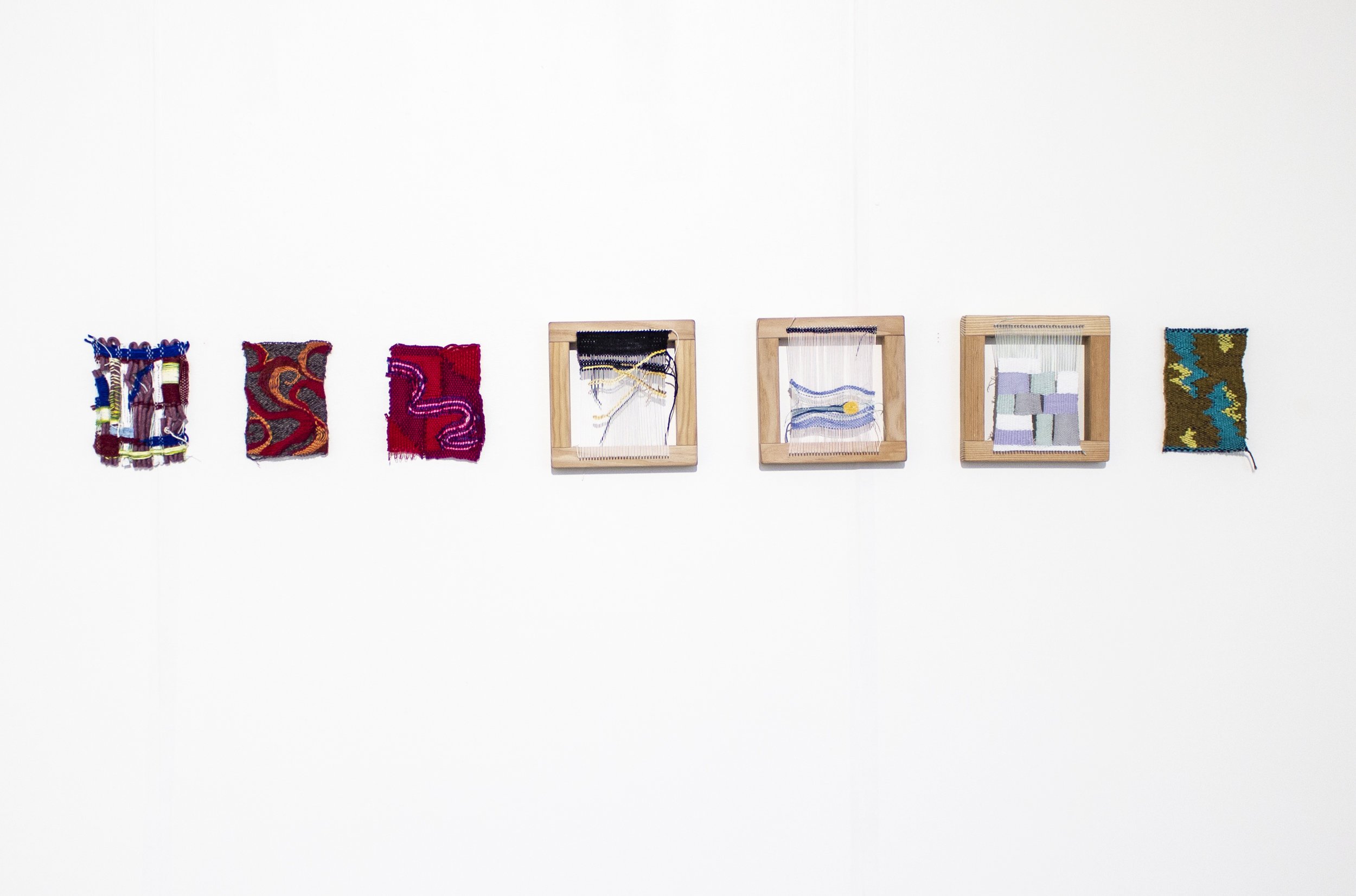CHROMATICA
Curated, designed, and installed by Briget Heidmous
IDEA SPACE, Colorado College. 2015
CHROMATICA examines color relationships and perception through contemporary glass.
The exhibition features 18 sculptural works by contemporary glass artists Tom Kreager, George Dielman, Evan Seeling, and Jeremy Hansen.
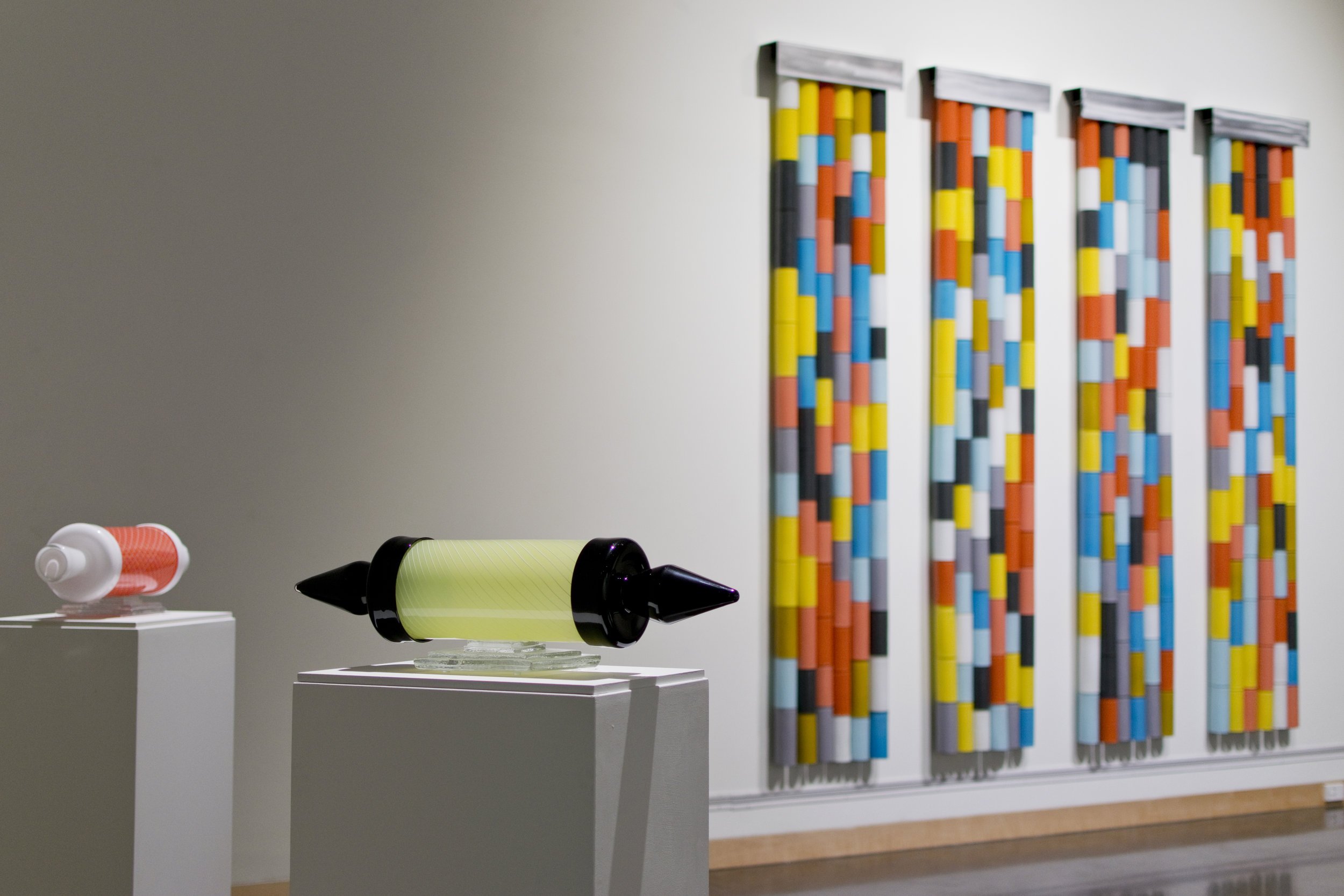
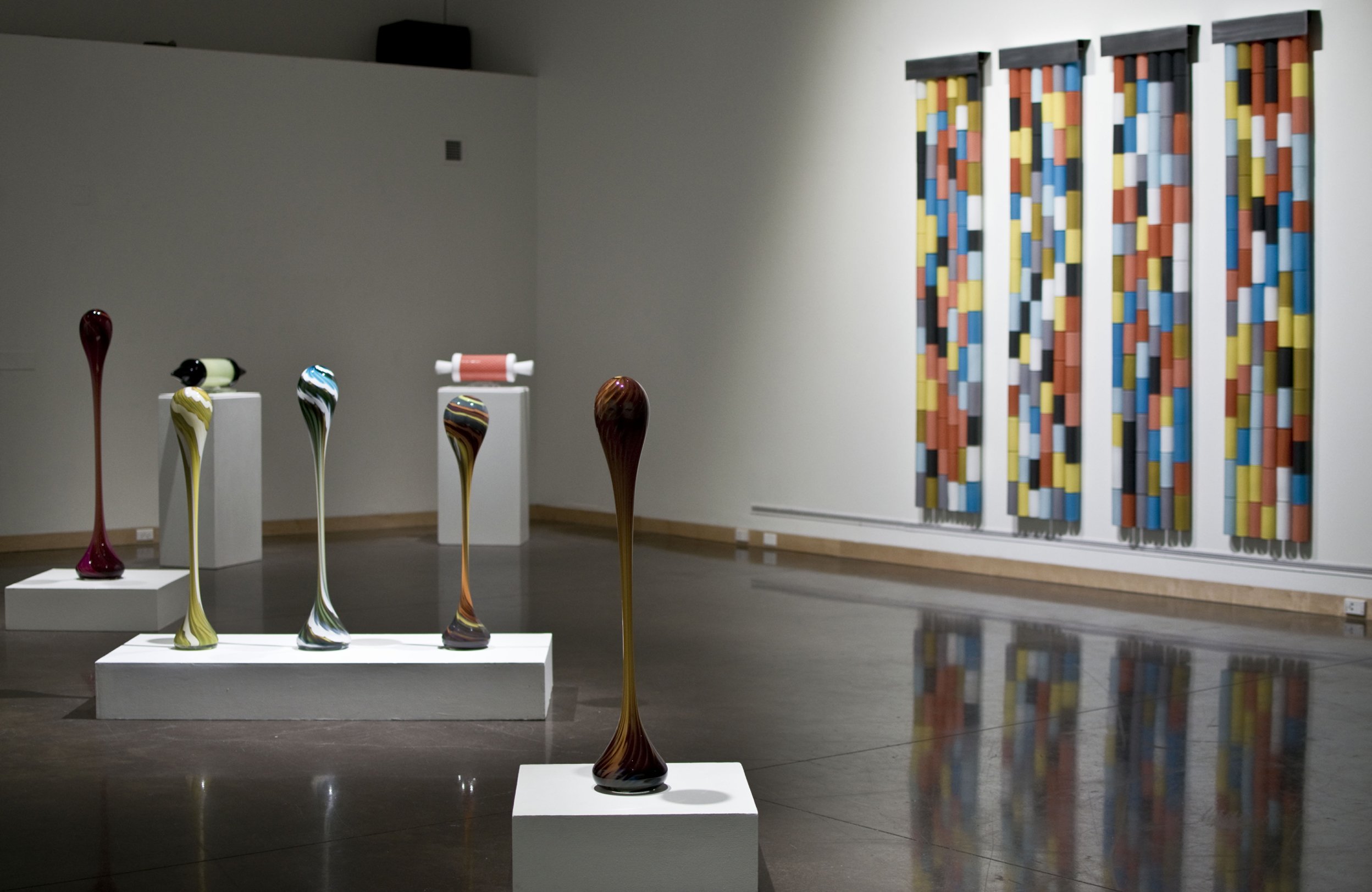
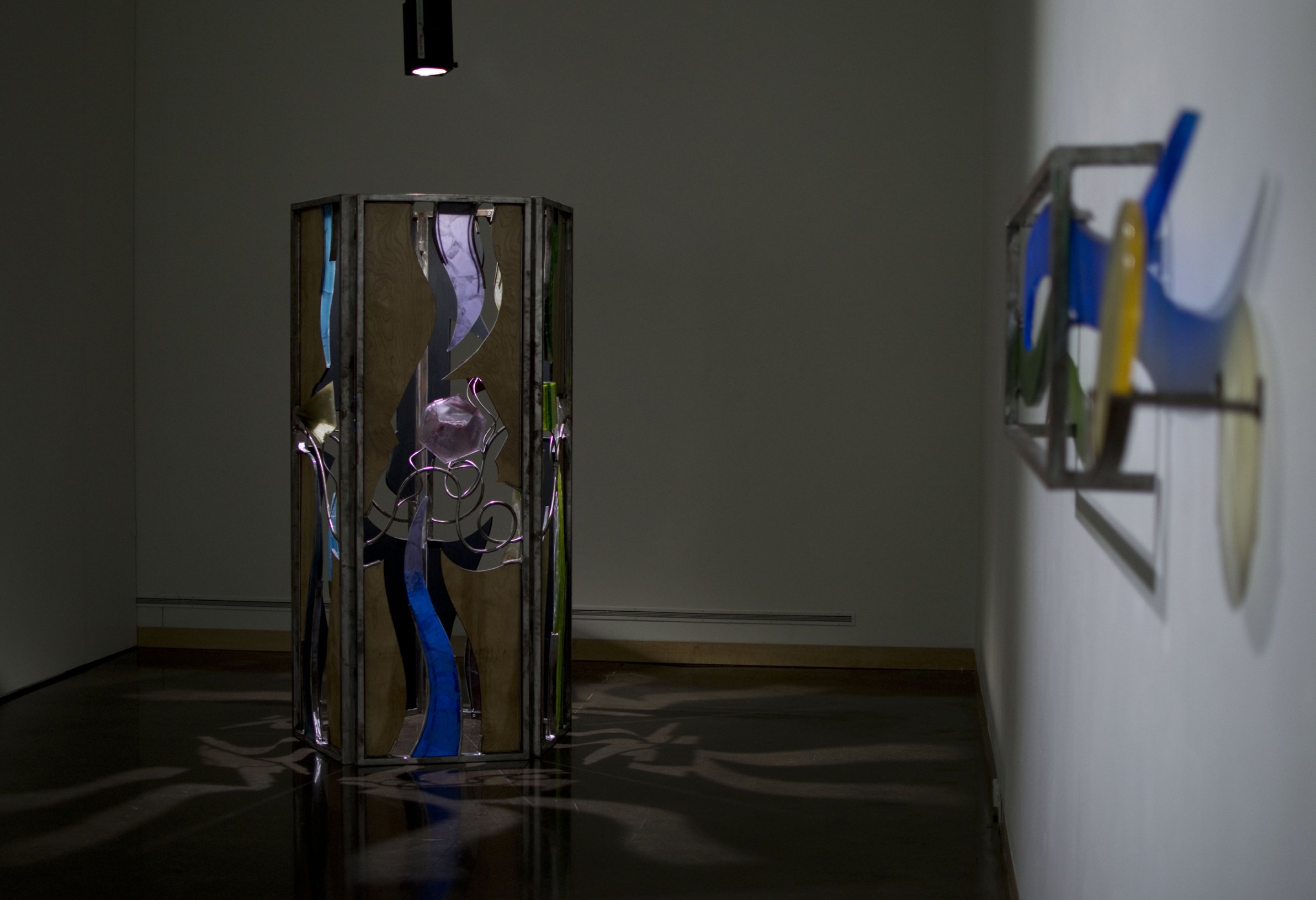
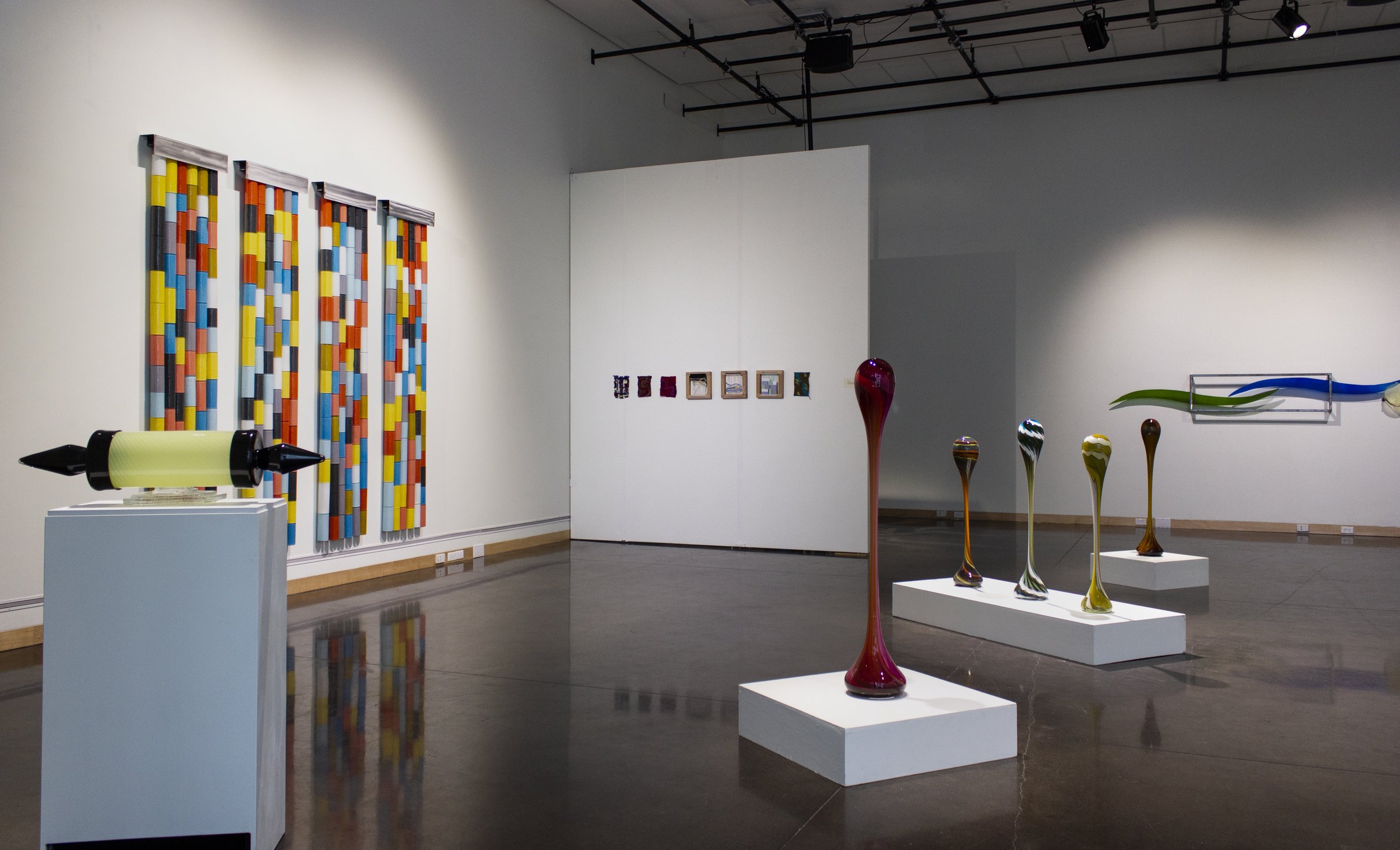
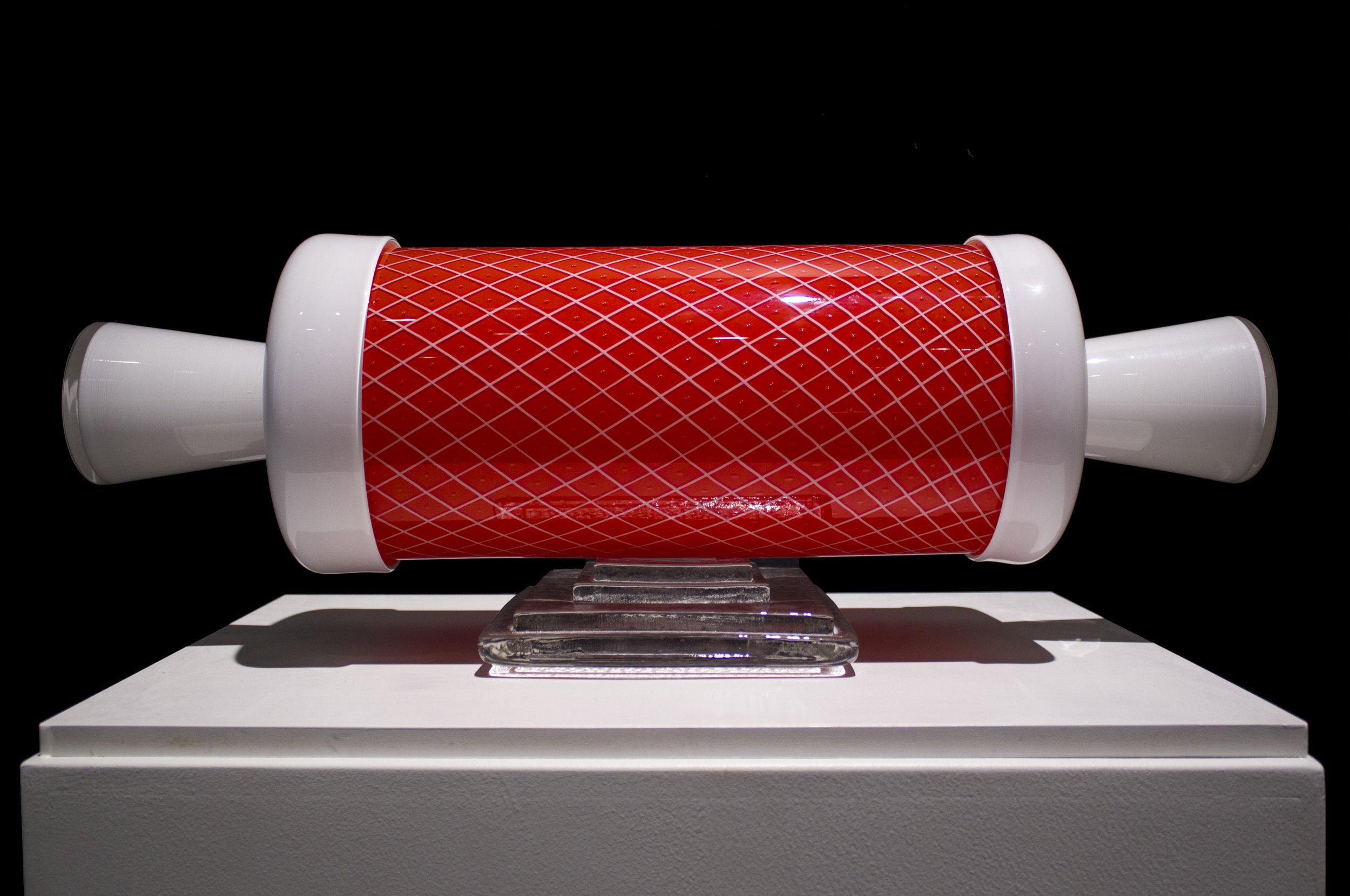
Color is an interdisciplinary topic. Multitudes of disciplines, scholars, and artists investigate the thing, color.
It is a key identifier. On a basic human level it allows us to identify that one object is different than another with greater clarity than tonal difference alone. Color is related to wealth, to family, and to spirituality. All major religions, respectfully, employ color to differentiate times of year, changes in life, and so on.
It comes up in popular culture. You can almost hear it now, and it might get stuck in your head for the rest of the day, the seductively winey voice of 311's leading man Nick Hexum reading the energy of his girlfriend Nicole Scherzinger in Amber:
“Woah, Amber is the color of your energy
Woah, shades of gold display naturally"
A pop cultural reference to the aura the “sphere” of energy that surrounds the body relating to internal energy radiating outwardly. Historically relating to the Chakras of the individual in question.
The points are these: Color is philosophical. Color is physical. Color exists in perception and context. It is an identifier for race, gender, culture, and groups. The list is indefinite.
A popular academic, a particularly art school interpretation, comes from artist and author Joseph Albers who’s work you can find in major museums with an American Modern section. The text Interaction of Colors published by Yale University Press has been read or a suggested text for every art student likely since it’s mass paperback release in 1971. The book was originally published in limited edition in 1963. A recent 2013 publication of the original text includes almost sixty more color studies. And the relevance continues.
Albers was faculty at Yale University, now the number one painting program in the United States.
Although this appears to be shifting into a research paper on Albers I assure you it is not.
Over 100 years earlier Johann Wolfgang van Goethe wrote and published, in German, Theory of Color. Goethe’s text was published in English in 1840. The writing was greatly concerned with the science of color. Ultimately the books address the same question: How is color perceived?
Glass provides a specific format to examine color and our perceptions of color. The material is reflective, refractive, and consistently offers variations of color. The material, once malleable and fluid, shows the striations, opacity, and density of color that is mysterious.
PROGRAMMING
In collaboration with the Colorado College Arts and Crafts program and Jeanne Steiner, Director. Visual Literacy programming designed by Briget Heidmous; Students were on-site at IDEA Space doing long-looking exercises and color studies in watercolor. These studies were then translated into weavings and included in the exhibition during the final week.
STUDENT EXPERIENCE | INFORMING FORM
TOPICS: FIBER ART, AN ARTS + CRAFTS SUMMER SESSION COURSE OFFERING
Opening day.
The exhibition opened with a barbecue from the Colorado College Carnivore Club, a live set from Bjorn Lindholm's project Call Me Colorado, and healthy attendance.
Made possible by the generous support of the Colorado College Cultural Attractions Fund and IDEA Space.

